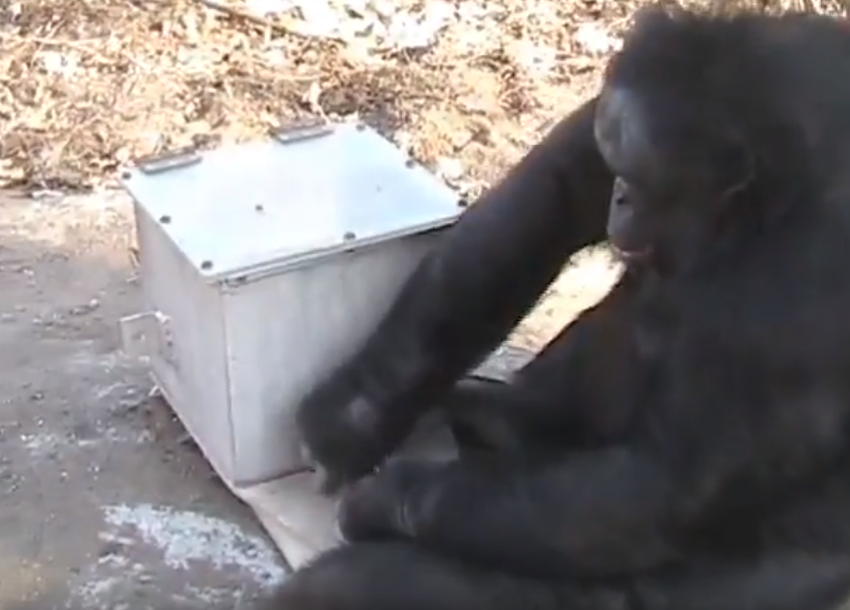
Video questions – Kanzi making and using stone tools
The bonobo Kanzi was taught to make and use simple stone tools of the Oldowan culture. What can we conclude about the mental abilities of Homo habilis from Kanzi’s performance?
For a long time it was thought that the use and manufacture of tools are features that distinguish us humans from all other species. But today we know that many species of animals use objects from their environment for different purposes, and some can even make tools by modifying these objects for particular purposes. Some primate species are among the most skilled and flexible tool users. The most diverse and largest tool repertoire has been observed among chimpanzees. So it is assumed that our ancestors that lived 3-4 million years ago, probably also used stones, sticks and twigs to better exploit various savanna food sources. However, we can only speculate on this because these tools leave no lasting traces.
New caledonian crows are among the most intelligent bird species. They can flexibly make tools out of twigs and use them for getting food.
Chimpanzees use many different types of tools for many different types of purposes. Chimpanzees and other great ape species have good skills to perceive and understand their physical environment. They understand that certain objects have certain properties, and how these can be used for particular purposes.
But archeological findings indicate the apperance of a new kind of tool in Africa about 2.6 million years ago: manufactured stone tools with sharp cutting edges. There is evidence that such tools were used by Australopithecines as early as 3.4 million years ago.
The survival and reproduction of the hominins living at that time probably depended a lot on getting enough animal food. Thus, there was a high selection pressure on the use and processing of objects in order to better exploit these food sources, such as for separating the meat from the carcass, breaking up bones, and warding off predators. With manufactured stones that had sharp cutting edges, more food could be obtained more efficiently than “with bare hands” or other parts of the body. Probably representatives of Homo habilis were the manufacturers of these first stone tools.
The production of these stone tools seemingly already differed in some ways from the production and use of tools we can observe among chimpanzees today: one object (the hammerstone) was used to work on another object. It already requires higher coordination of hands and increased patience to make a useable stone flake of certain quality.
In addition, the production and use of tools among primates is learned in the course of a lifetime by observation and imitation of conspecifics as well as individual trial-and-error learning. Behavioral biologists call this form of learning “social learning”. The more complex the tools and their manufacture, the better must be the skills for social learning so that a specific toolmaking culture can spread in a population and be passed on to offspring
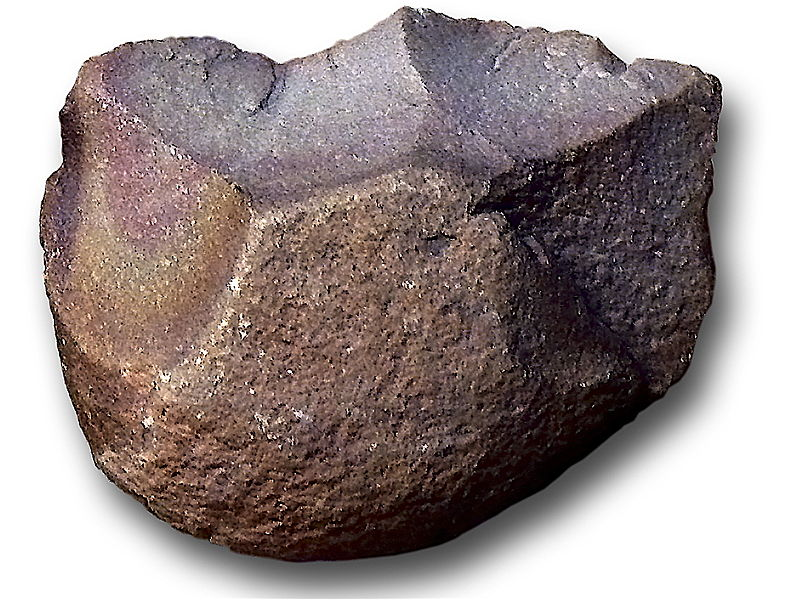
2.6 Million year old Oldawan culture stone tool
Anthropologists have taught the Bonobo Kanzi to make such Oldowan stone tools in order to test the ability of our closest relatives for making these tools. Kanzi is able to make and use these stone chips, but apparently he is not quite as skilled as the makers of the oldest Oldowan stone tools. These must have already had an improved control of hand movements and endurance than chimpanzees and bonobos.
Questions about the video:
What behaviors and abilities of Kanzi do you observe while making these stone flakes? How skilled is he?
What are the differences between chimpanzee and bonobo tool making in the wild and Kanzi’s handling of stones?
Does the caretaker of Kanzi play a role for Kanzi so that he does not give up the activity?
Questions about the video:
Compare the toolmaking and tool use by chimpanzees in the wild (e.g., termite fishing using prepared branches) to Kanzi making / using the stone toolin the video:
How many steps are involved, from the selection of the material to the actual use of the tool and the solution of an actual problem (acquisition of food)
How far apart in time and space are the making and the use of the tool for the actual purpose?
How much strength, patience, and fine motor skills of the hand are required for the manufacture and use of the tool to solve the actual problem?

The bonobo Kanzi was taught to make and use simple stone tools of the Oldowan culture. What can we conclude about the mental abilities of Homo habilis from Kanzi’s performance?

A reading text about tool use and tool making in the animal kingdom and in our early ancestors
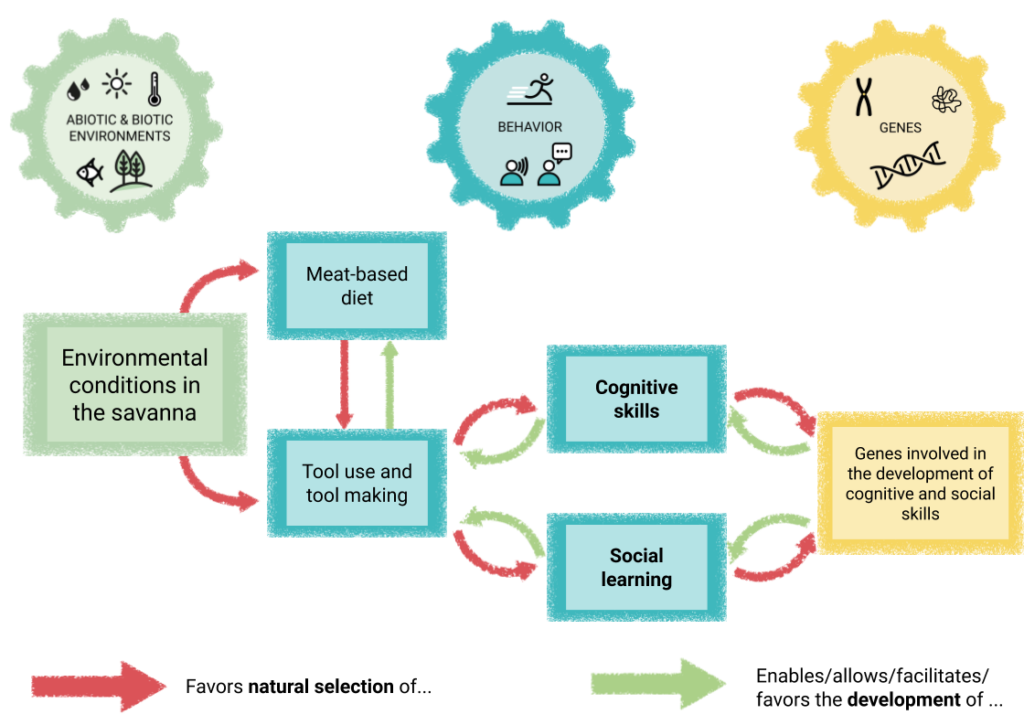
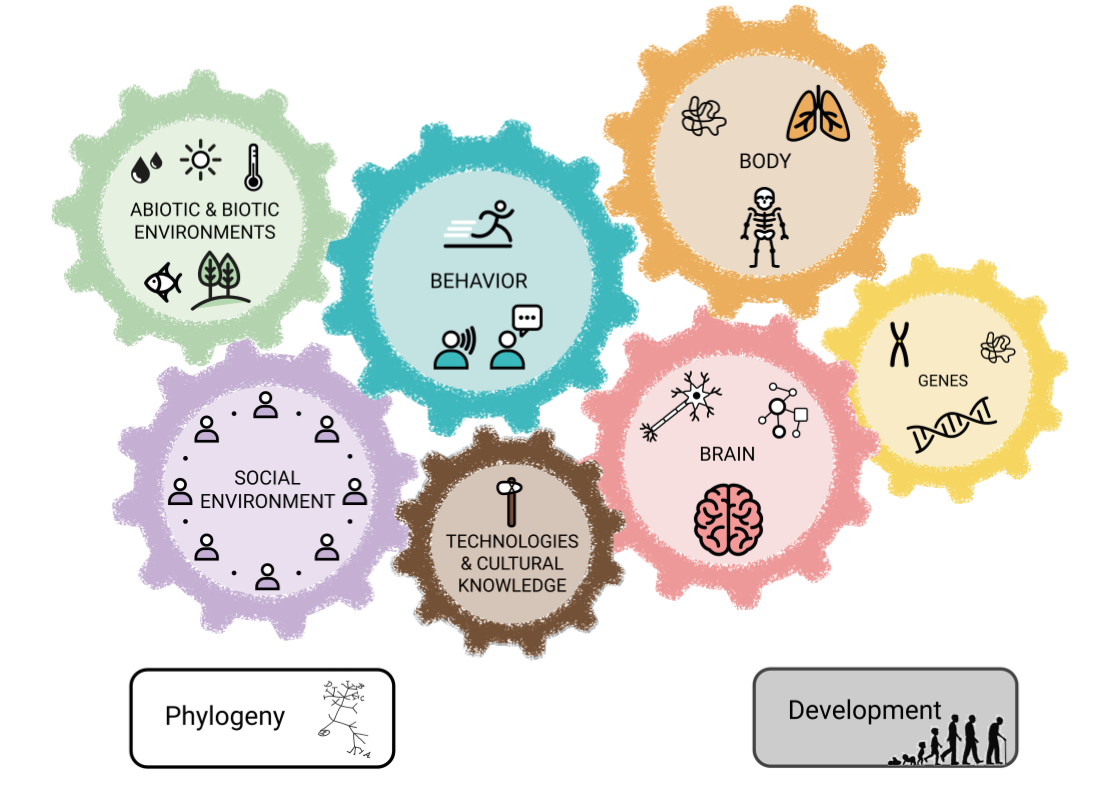
All causal maps on human evolution in one Google slide file
The environmental conditions of the savanna were increasingly such that those hominins had higher chances of survival and reproduction that could exploit animal food sources. Among those who fed on animals, those had higher survival and reproductive opportunities, which could effectively exploit as much meat as possible with the help of tools. Better tools for exploiting meat and bone marrow, and thus higher chances of survival and reproduction, had those who had increased cognitive abilities for the production of these tools. These include patience, the ability to coordinate hand movements, and the ability to select suitable objects from the environment for tool making. In addition, those had better tools who could learn to make these tools from others in their group through social learning. Genes involved in the development of these skills were inherited to their offspring, who also had better chances of survival and reproduction because of their ability to make effective tools.
Further reflection questions:
If the production of tools is also passed on through social learning, what role did the social or cultural environment play in developing the skills of our ancestors to make the stone tools of the Oldowan culture? How can we extend the causal diagram to reflect the role of these factors?
Are there also certain body features that may have been beneficial for making stone tools?
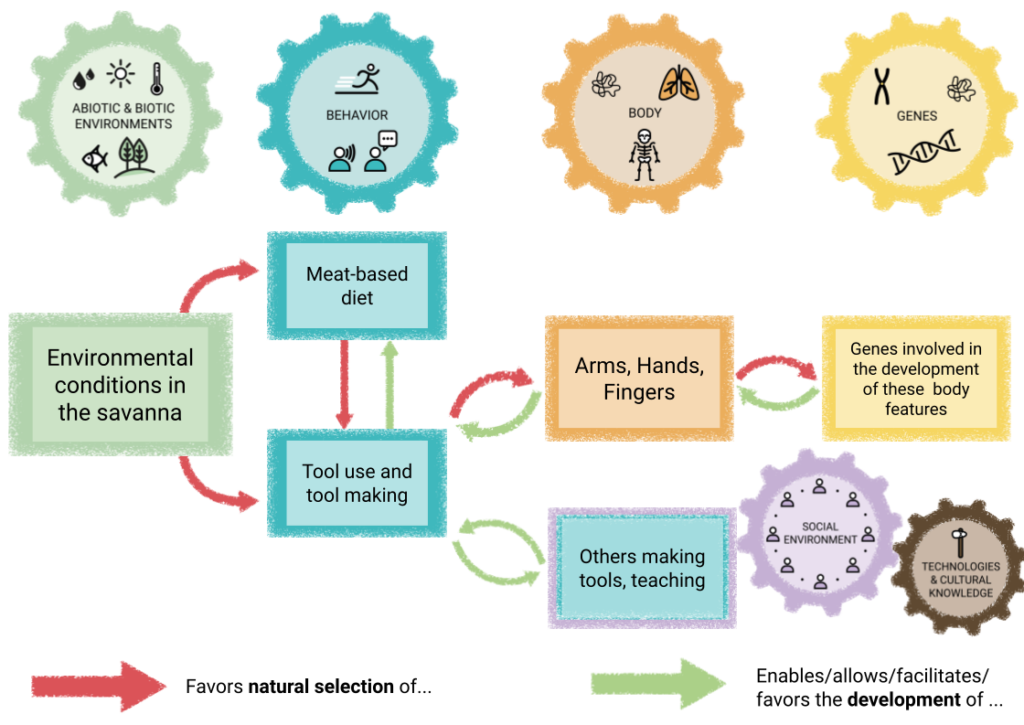
Possible extension of the causal map to include the role of the social/cultural environment in the development of specific tool making/tool use skills, as well as the natural selection of body features that facilitate the making and use of stone tools
Haidle, M. N. (2012). How To Think Tools? A comparison of cognitive aspects in tool behavior of animals and during human evolution. Tübingen, Germany. https://doi.org/10.13140/RG.2.1.1000.0484
Roffman, I., Savage-Rumbaugh, S., Rubert-Pugh, E., Ronen, A., & Nevo, E. (2012). Stone tool production and utilization by bonobo-chimpanzees (Pan paniscus). PNAS – Proceedings of the National Academy of Sciences, 109(36), 14500–14503. https://doi.org/10.1073/pnas.1212855109
Savage-Rumbaugh, S., & Mintz Fields, W. (2006). Rules and Tools: Beyond Anthropomorphism. In N. Toth & K. D. Schick (Eds.), The Oldowan: Case Studies into the Earliest Stone Age. Stone Age Institute Publication series (pp. 223–241). Gosport, IN, USA: Stone Age Institute Press.
Toth, N., & Schick, K. (2018). An overview of the cognitive implications of the Oldowan Industrial Complex. Azania, 53(1), 3–39. https://doi.org/10.1080/0067270X.2018.1439558
Toth, N., & Schick, K. (2009). The Oldowan: The Tool Making of Early Hominins and Chimpanzees Compared. Annu. Rev. Anthropol., 38, 289–305. https://doi.org/10.1146/annurev-anthro-091908-164521
Toth, N., Schick, K. D., & Semaw, S. (2006). A comparative study of the stone tool-making skills of pan, Australopithecus, and Homo sapiens. In N. Toth & K. D. Schick (Eds.), The Oldowan: Case Studies into the Earliest Stone Age. Stone Age Institute Publication series (pp. 155–222). Gosport, IN, USA: Stone Age Institute Press. Retrieved from http://www.stoneageinstitute.org/pdfs/oldowan-ch6-toth-etal.pdf
OpenEvo is an educational innovation project from the Department of Comparative Cultural Psychology at the Max Planck Institute for Evolutionary Anthropology.
Evolve the future of education with us!